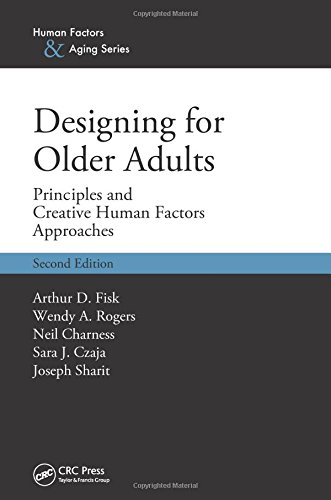

Most ebook files are in PDF format, so you can easily read them using various software such as Foxit Reader or directly on the Google Chrome browser.
Some ebook files are released by publishers in other formats such as .awz, .mobi, .epub, .fb2, etc. You may need to install specific software to read these formats on mobile/PC, such as Calibre.
Please read the tutorial at this link. https://ebooknice.com/page/post?id=faq
We offer FREE conversion to the popular formats you request; however, this may take some time. Therefore, right after payment, please email us, and we will try to provide the service as quickly as possible.
For some exceptional file formats or broken links (if any), please refrain from opening any disputes. Instead, email us first, and we will try to assist within a maximum of 6 hours.
EbookNice Team

Status:
Available0.0
0 reviewsThe first edition of Designing for Older Adults: Principles and Creative Human Factors Approaches broke ground as an easily accessible source of information, a primer on designing for older adults. In this second edition, the authors, as any good human factors practitioner would, have considered comments from readers. They have revised and updated each of the original chapters, rearranged some of them for a more natural flow, added a new section of tutorials, and provided updated recommended readings.
New in the Second Edition:
The new Tutorials section begins by focusing on general issues that need to be considered when involving older adults generally in research and usability studies and more specifically in focus group studies. It elucidates statistical considerations relevant to user testing with older adults and modeling approaches such as task analysis, error prediction, and GOMS analysis. Given the prevalence of multimedia in today’s world, the authors include a tutorial on design considerations for multimedia products in general but especially for older adults.
Meet the Needs of Older Adults through Proper Design
Reflecting the multidisciplinary nature of the field, this multidisciplinary author team translates a vast array of academic literature into guidelines without losing its strong grounding in science. They discuss the role the field of human factors plays in creating technology that is effective and safe to use. This book provides information specific enough to be immediately applicable yet general enough to be relevant to technologies of the future.